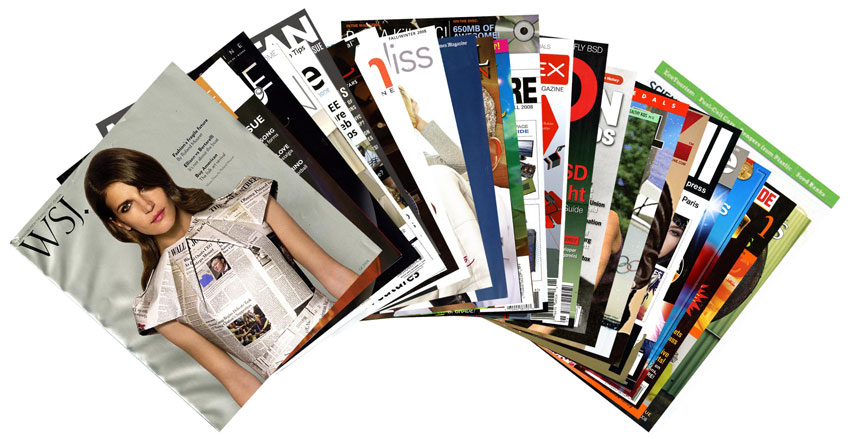It’s best to choose a subject that you know something about – this will make you more enthusiastic about the project and more likely to keep you going through any difficult times.
Who will your target audience be
It’s vital to be very clear about this because the design and writing style of a magazine for teenage girls is going to be very different than for one for men in their 40s for instance. And it is going to have a big impact on the type of advertisers you can hope to get.
What will be your tone
So you can inform your writers and designers, it’s important to decide what the tone of your magazine will be, whether you want to be an authoritative voice, or light and gossipy.
Look at what your competition is.
If you are thinking of going into an already crowded market then you will have to offer something different or better than the competition is.
Distribution
Decide on how you are going to distribute your magazine, whether you hope to make it available to buy in shops or are going to give it away.
Reach out
Reach out to people, both in the subject you have chosen and to those with experience in magazine business – ask for their opinions and input on what you are planning to do.
Create a business plan
You will need one of these to
1. Know whether your numbers add up and whether you can make a profit from your magazine
2. Try and raise money for your magazine
It’s often a good idea to pay an expert in writing a business plan to do this for you
Get a team together
Unless you are very skilled in a lot of different areas and are planning only to publish infrequently you will need to have a team of people working for you. You will need
1. Content creators – primarily writers and photographers. You can hire freelancers to do this when you are starting off.
2. Production staff
Graphic designers are experts in doing the layout of the magazine and making it look good – find someone or a company who has plenty of experience in doing magazine design. Like us!
Sub-editors check the copy and make sure everything fits in the right place.
3. Sales – unless you are good at it yourself, you will need someone to sell ads as this is where you will probably make most of your money.
4. Marketing – it’s vital that people get to know about your magazine, and for this you need someone with good marketing skills, including digital marketing skills and social media knowledge.
Find a printer
Meet several printers and find out how much they will charge for doing your magazine. Ask to see previous examples of their work.
Look for reviews of them online to see what previous customers thought of them.
The first issue
1. Decide on the stories you are going to cover and how many pages this will take up, and how many pages of advertising you are planning to use.
Make a flatplan indicating which stories and ads are going to go on which pages.
2. Brief your writers and photographers on the stories they are going to cover.
3. While this content is being created decide on the stories for the next issue.
4. Get the magazine laid out/created by your graphic designer and sub-editor.
Start a website
On the site you can give a flavour of what your magazine will be like and start a forum for future feedback on your issues.
Launching your magazine
Try to have some kind of promotion for the first issue, a freebie or maybe a price reduction so that people will be more likely to try it.
After launch
Pay very close attention to all the feedback that you get for the magazine – especially whether people like the content and design of the magazine. If they don’t, you probably want to consider tweaking things for the next issue. If people think it is too expensive, you might have to consider making more money from advertising rather than sales.
If people like particular features or articles then aim to do more of them.
Creating a magazine is a difficult process, the most difficult part being actually making any money out of it, but if you get it right it can be a fantastically rewarding experience.
If you decide to do a client magazine, it is an excellent way to engage your customers and to get your sales message over to them in a subtle way.
If you’d like any further advice from us please contact us at info@targetscommunications.co.uk


